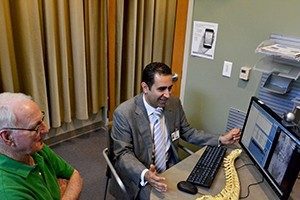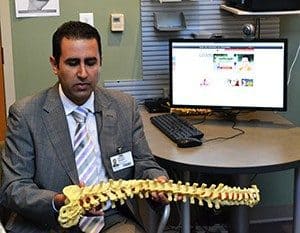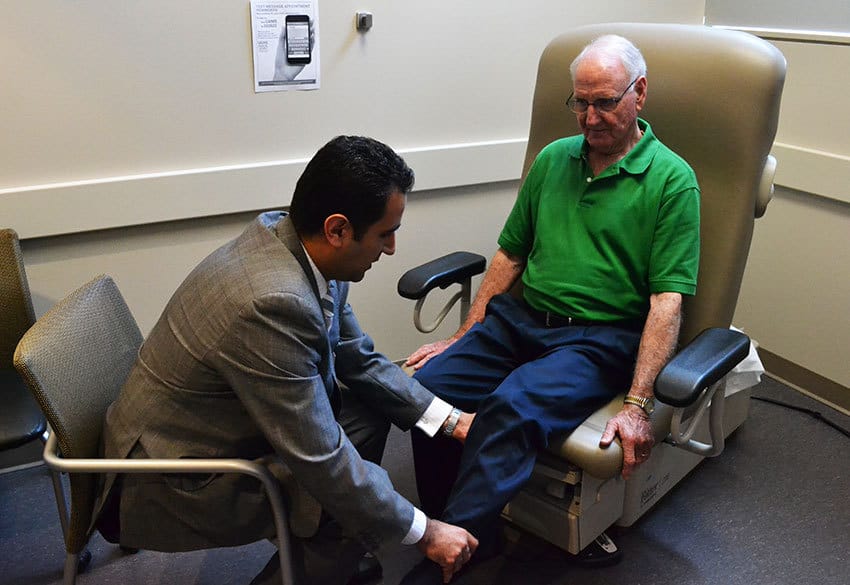Senior Olympian Gets Relief from Back Pain
| June 16, 2015 | After four previous spine surgeries, Frank Dicus wasn’t sure he would ever experience relief from his back pain, but he wasn’t ready to give up hope.

Dicus and Kazemi view scans of Dicus’ back prior to surgery.
“I kept searching,” Dicus said. “I knew there had to be a better way to get rid of this pain.”
Frank had been active his whole life in sports and other physical activities and was still working, even at the age of 80. However in the last several years he had been plagued by persistent low back and leg pain. His previous surgeries included the insertion of multiple screws and rods that provided temporary relief. But eventually, the pain always returned.
“He was in a lot of pain,” Judy Dicus, Frank’s wife, said. “He couldn’t do much walking without having to sit down, he couldn’t do the yard work and he was anxious to get back to work.”
Dicus found hope in Noojan Kazemi, M.D., an assistant professor in the Department of Neurosurgery in the UAMS College of Medicine and a specialist spine and nerve surgeon.
After carefully reviewing his x-rays and MRI scans, “there was evidence of significant scar tissue, nerve pinching and muscle bulges” said Kazemi.
“Frank had this course of procedures on his lumbar spine, which left him, obviously, kind of shy and hesitant to have spine surgery again,” Kazemi said. “He came to us with
pain. Instead of going through the same scar tissue and digging through scarred muscle, we decided to address the issue through a minimally invasive, lateral technique.”

Kazemi explains the lateral procedure technique he performed on Dicus.
Kazemi is one of only a few doctors in the state to offer the procedure, which allows doctors to enter from the patient’s side, instead of the traditional way through the back. This way, the surgery avoids splitting and dissecting through the very large muscles in the back – all of which can cause significant pain for the patient, increasing the hospital stay and delaying recovery. Kazemi started the procedure last year after being recruited to UAMS and has now performed it more than 30 times.
“Essentially, through a very small incision and then through a small tube, we’re able to come down and access the spine in a minimally invasive fashion,” Kazemi said. “Then, we perform what we need to on the spine that way.”
Dicus said he experienced no pain the day after the procedure and was released to go home.
Now, a couple months removed from what he hopes is his final back surgery, Dicus is back to work and doing things around the house.
“I’m doing everything I couldn’t do before,” he said. “I feel great.”
For Dicus, that includes getting back into shape to participate in the Arkansas Senior Olympics.
